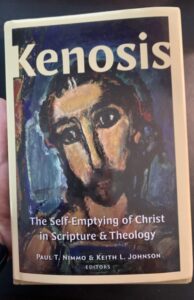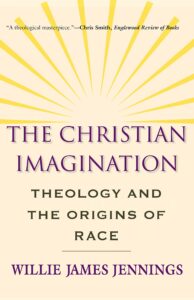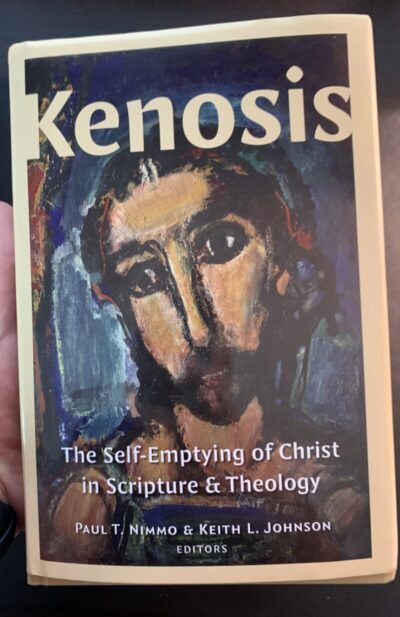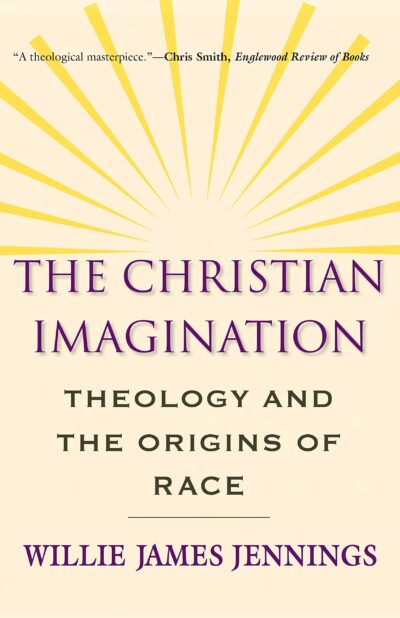My friend Paul Nimmo and I co-edited Kenosis: The Self-Emptying of Christ in Scripture and Theology in honor of Bruce McCormack’s retirement from Princeton Theological Seminary. Here’s the publisher’s description:
“In the “Christ-hymn” of Philippians 2, the apostle Paul makes a startling claim: that Jesus “emptied himself” in order to fulfill God’s will by dying on the cross. The self-emptying of Christ—theologically explored in the doctrine of kenosis—is a locus within Christology and factors significantly into understandings of the Trinity, anthropology, creation, providence, the church, and even ethics. As such, it has been debated and reflected upon for centuries.
The present volume draws together some of the finest contemporary scholars from across the ecumenical spectrum to expound the doctrine of kenosis—its biblical roots, its historical elaborations, and its contemporary implications.”
Table of Contents:
- Kenosis and the Drama of Salvation in Philippians 2 (John Barclay)
- Power and Kenosis in Paul’s Letter to the Romans (Beverly Roberts Gaventa)
- The Vocation of the Son in Colossians and Hebrews (Grant Macaskill)
- The Divine Name as a Form of Kenosis in Both Biblical Testaments (Rinse Reeling Brouwer)
- Origen of Alexandria on the Kenosis of the Lord (John McGuckin)
- Augustine, Kenosis, and the Person of Christ (Han-luen Kantzer Komline)
- Cyril of Alexandria and the Sacrifice of Gethsemane (Katherine Sonderegger)
- Divine Perfection and the Kenosis of the Son (Thomas Joseph White, OP)
- Kenosis as Condescension in the Theology of Martin Luther (Matthew Bruce)
- The Revisioning of Kenosis after the Critique of Schleiermacher (Paul Nimmo)
- Kenosis and the Humility of God (David Fergusson)
- Is There a Kenotic Ethics in the Work of Karl Barth? (Georg Pfleiderer)
- Kenosis and the Mutuality of God (Cambria Kaltwasser)
- Kenosis and Divine Continuity (Keith L. Johnson)
- The Generosity of the Triune God and the Humility of the Son (Christoph Schwöbel)
- The End of Humanity and the Beginning of Kenosis (Hanna Reichel)
- Kenosis as a Spiritual Practice (Kevin W. Hector)
I received this award today, and I’m deeply grateful for it. My family, friends, and students know how important the vocation of teaching is to me. I am thankful every day for the opportunity to step into the classroom with my students. Teaching has been a deeply transformative experience for me.
I have been wrestling with the challenges and perils of theological pedagogy over the past few years, in part because of questions sparked by the Theological Education Between the Times series by Eerdmans.
Christianity is a teaching faith, but theologians often have not taught the faith well. These books have challenged me to think in new ways not only about how I teach but also about the why of teaching. Teaching isn’t simply about the transfer of information or even being a role model. It’s about inviting others into a way of life, something along the lines of what Willie Jennings describes here:
I yearn for a vision of Christian intellectual identity that is compelling and attractive, embodying not simply the cunning of reason but the power of love that constantly gestures toward joining, toward the desire to hear, to know, and to embrace. Such an identity articulates its judgments, its discernments, its prohibitions, even its risky negations of social forms and practices deeply inside the gestures of joining and longing. Here theology elicits life patterns that mirror God’s own seeking of creation…
The Christian Imagination, pp. 291
This is the kind of teacher I want to become. It will be a lifetime pursuit.
Whenever I teach my undergraduate “Christian Ethics” course at Wheaton College, I assign Willie James Jennings’ The Christian Imagination: Theology and the Origins of Race. It is a remarkable book, and over the years it has become the heart of the course.
Jennings’ argument is challenging on multiple levels. I tell my students that what Jennings is doing is like trying to describe water to a fish. It personally took me several readings to understand everything the argument accomplishes, and even after teaching it a half-dozen times, I still discover new things.
This means the book poses a pedagogical challenge, especially in an undergraduate setting. My students are gifted, but they are still learning how to read academic texts and do not have the luxury of multiple readings during a semester.
So I created a “teaching outline” of The Christian Imagination.
This outline is by no means exhaustive or comprehensive, but it summarizes the key arguments Jennings’ makes throughout the book. I have found that it greatly helps students on their first read and serves as good starting for our seminar discussions.
I’m posting the outline here in case it might be useful for others both as they read and teach the book.
My friend Paul Nimmo and I co-edited Kenosis: The Self-Emptying of Christ in Scripture and Theology in honor of Bruce McCormack's retirement from Princeton Theological Seminary. Here's the publisher's description: "In the “Christ-hymn” of Philippians 2, the apostle Paul makes a startling claim: that Jesus “emptied himself” in order to fulfill God’s will by dying on the cross. The self-emptying…
I received this award today, and I'm deeply grateful for it. My family, friends, and students know how important the vocation of teaching is to me. I am thankful every day for the opportunity to step into the classroom with my students. Teaching has been a deeply transformative experience for me. I have been wrestling with the challenges and perils…
Whenever I teach my undergraduate "Christian Ethics" course at Wheaton College, I assign Willie James Jennings' The Christian Imagination: Theology and the Origins of Race. It is a remarkable book, and over the years it has become the heart of the course. Jennings' argument is challenging on multiple levels. I tell my students that what Jennings is doing is like…





